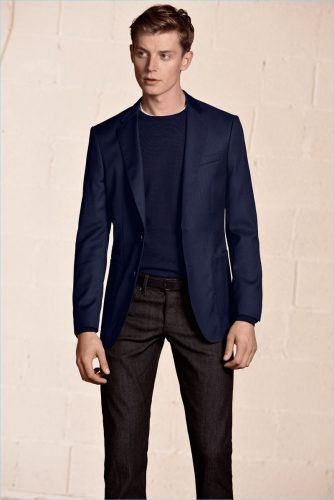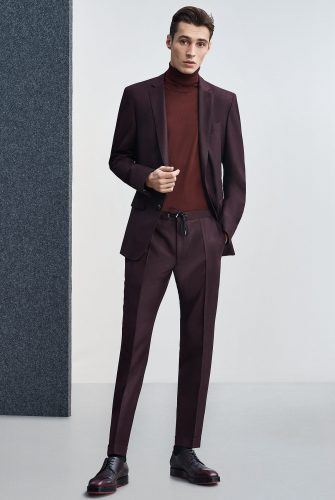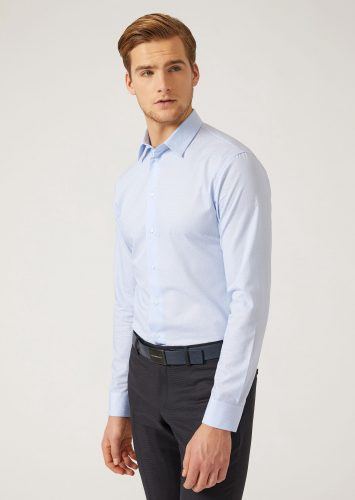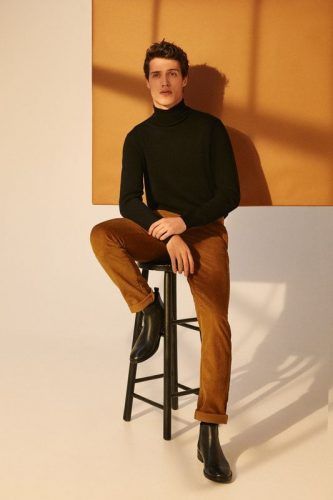Congratulations on scoring the position. Now it’s time to make sure you impress your peers and superiors with an appropriate internship wardrobe because, you know, first impressions last. But dressing well doesn’t require wearing luxury brands or having a six-figure salary.
In a business environment, someone who doesn’t care about his looks might be perceived as a man who doesn’t care about his job, his career, or the people that he works with.
General Tips
- The Fit. Never wear anything too baggy or too tight. See to it that you will be able to move comfortably behind your desk and walk freely inside the office. Visit the tailor if you must.
- Versatility of Outfits. Your clothes should be timeless and easy to combine with others so you can create multiple looks out of the same items. For instance, the same suit worn with a different combination of shirts and ties can produce different styles. When buying business outfits (with suits included), go for the affordable and multi-purpose ones, which you can wear to weddings and parties alike, and not just at the office.
- The Climate. Fabrics like wool and corduroy in earthy and navy tones are the best for winter and fall, while cotton and linen in bright colors are perfect for summer and spring.
- Nature of Work. According to Fine Young Gentleman, you need to look and act professional, so dress in a manner appropriate to the firm you are interning at.
- Take care of your clothes. The business clothes that you buy today will stay with you for years. Make sure to use extra-wide shoulder hangers for your jackets to prevent damage. Then fold your knitwear, T-shirts, and underwear. Give extra effort when folding your knitwear like cardigans and sweaters to preserve the quality of the fabric. Also, make sure that your clothes don’t appear as they are crumpled, so it’s essential to use a flat iron on them. An ironed shirt automatically ups your professionalism by ten points. A steamer works as well.
- Keep your wardrobe organized. You should be able to easily get what you need every morning to look sharp without spending too much time dressing up. If this is too difficult for you, prepare your clothes for the next day before you go to sleep.
- Grooming for an internship. Nails must be trimmed and clean. Visit the barber and go for the business-appropriate hairstyle like “brush-up” or “comb-over.” The beard must be trimmed or shaved. Give your best shot to have the ideal image of an intern. Proper office wear makes you appear smarter, more competent, and more trustworthy.
What to Wear to an Internship?
↓ 16 – Business Casual With Jeans

↓ 15 – Bags
Say no to backpacks as they are sloppy, unprofessional, and a hassle for public transportation. Opt for a smart-looking leather briefcase. A portfolio or a leather/canvas bag is your best bet.

↓ 14 – Business Casual
There’s a thin line between being too formal and being too casual, and that’s where you should be. Wear business attire that is appropriate enough for the nature of your work. A blazer with contrasting colored trouser is less formal and can be worn as part of your business casual outfit. And if your beard neems grooming, do check out these Professional Beard Styles.

↓ 13 – For Tech Company
Tech-related companies usually do not have a company dress code, and people often can wear whatever they want. Say no to hoodies and go for quarter-zip sweaters instead. Wear it with a collared shirt underneath, making this a great jacketless option. Bags with built-in chargers, cables, and camera compartments will satisfy your needs.

↓ 12 – High-end
High-end doesn’t mean you should overdo it with unnecessary add-ons since too many will draw unwanted attention. You can wear plain T-shirts as an undershirt, but ensure that it must not be longer than the suit itself. On the other hand, turtleneck and dress shirts are better, and different colors allow you to wear the same two suits each week without raising suspicions. Here’s our complete Men’s Business Casual Attire Guide to help you out with this.

↓ 11 – Shoes
Have at least a pair of brown and a pair of black shoes. Get good quality shoes, and it would be best to look for sales and discounts. Real, smooth leather shoes are a must, but always polish them before going to the office. Try to look for derby-style shoes; they’re slightly less formal than oxfords. As for the socks, match them to your trousers. Navy socks go with navy trousers, and grey socks go with grey trousers. You can don some stripes, dots, and basic patterns. Just don’t be too flashy.

↓ 10 – Tie
A regular necktie is appropriate for internships. It should not go past below your belt when you wear it. The color should be within the palette of your suit. Invest in different blue, red, and yellow shades to start, and then branch out into different colors and patterns. Stick to conservative patterns like small paisleys, dots, and geometric patterns. You can also buy an affordable tie bar to add a little flair.

↓ 9 – Suit
The need for suits is minimal for someone working in a business casual office. Have a suit and a blazer on standby if you need them for an event or client meeting. Go for single-breasted suits with double vents as they can cover your bottom even if you sit down. Here are all the most Amazing Men’s Suits Combinations to Get Sharp Look.

↓ 8 – White Chinos

↓ 7 – Tailored Sweater
Tailored sweaters and vests are acceptable for men in a business casual setting, especially when paired with a collared shirt. A quilted jacket is also a great option as it is lightweight, warm, and it makes you look instantly well put together.

↓ 6 – Minimalist
The more minimal the design, the more formal it is. Neutral colors (navy, white, black, grey, olive, camel) look more professional and formal.

↓ 5 – Formal
Go with solid navy blue and charcoal grey, as they are the staples of business attire – they work with everything. Keep it conservative if you are going for a pinstripe. Some firms have unspoken rules on fancy-looking suits, so observe those above you and figure out what is acceptable. Here are the Best Charcoal Grey Suits with Black Shoes

↓ 3 – Wear-What-You-Want Day
If your supervisor allows you to wear anything you want, read between the lines – be professional through your outfit, and never opt for streetwear. Go for a plain black, navy blue tee (or polo shirt) and khaki pants. Prefer to wear black shoes or brogues and not sneakers.

↓ 2 – Relaxed
Go for a plain button-down rather than self-printed or striped ones. The Fine Young Gentleman claimed that the wider the spread on a collar, the more formal it is. The top button should be left unbuttoned, as they stay upright and look better. Men with a wider neck should find collars that have more room for ties. A button-down or classic width collar is best for thinner guys.

↓ 1 – Casual Dress Code
Being more casual at work breaks the style rules and gives you more space to express your personality. The more colorful and the more details an item has, the more casual it is. You can opt for casual attire, especially if you’re working in fields like engineering, biology, chemistry. In these industries where you’re required to work with your hands and sometimes get messy, you also wouldn’t wear a suit. But being casual doesn’t mean you are free to wear basketball shorts, a basic tee, and sneakers.











